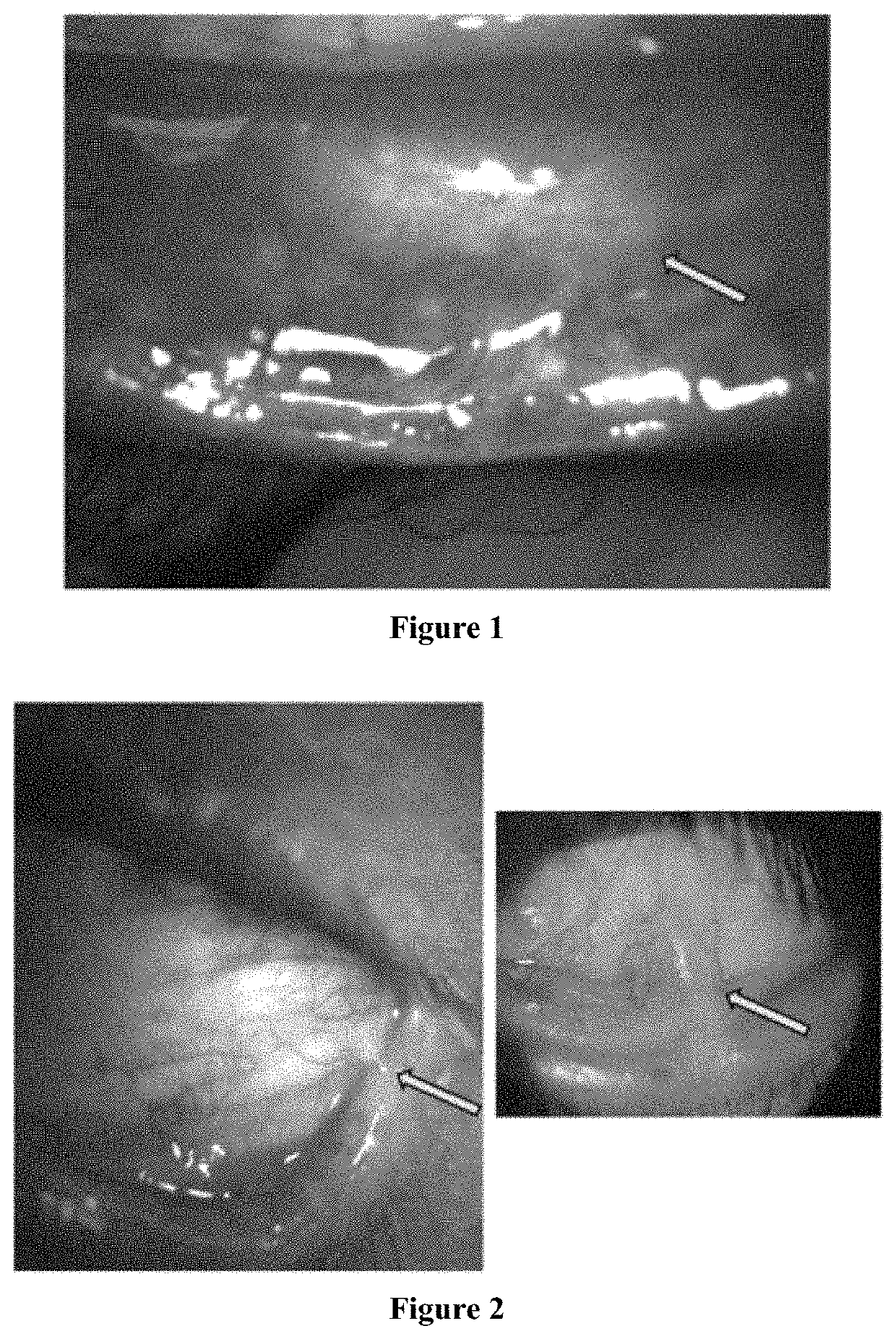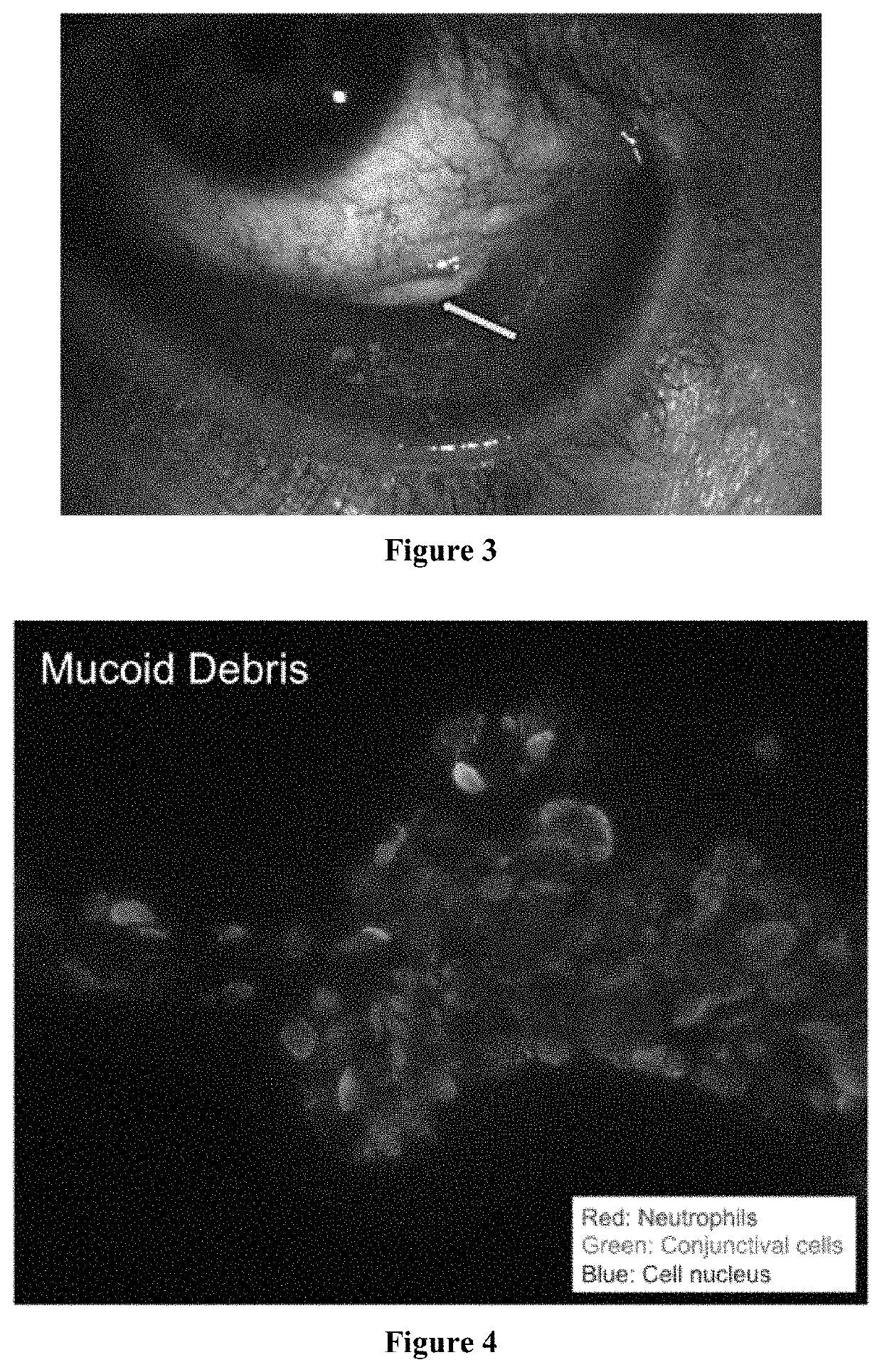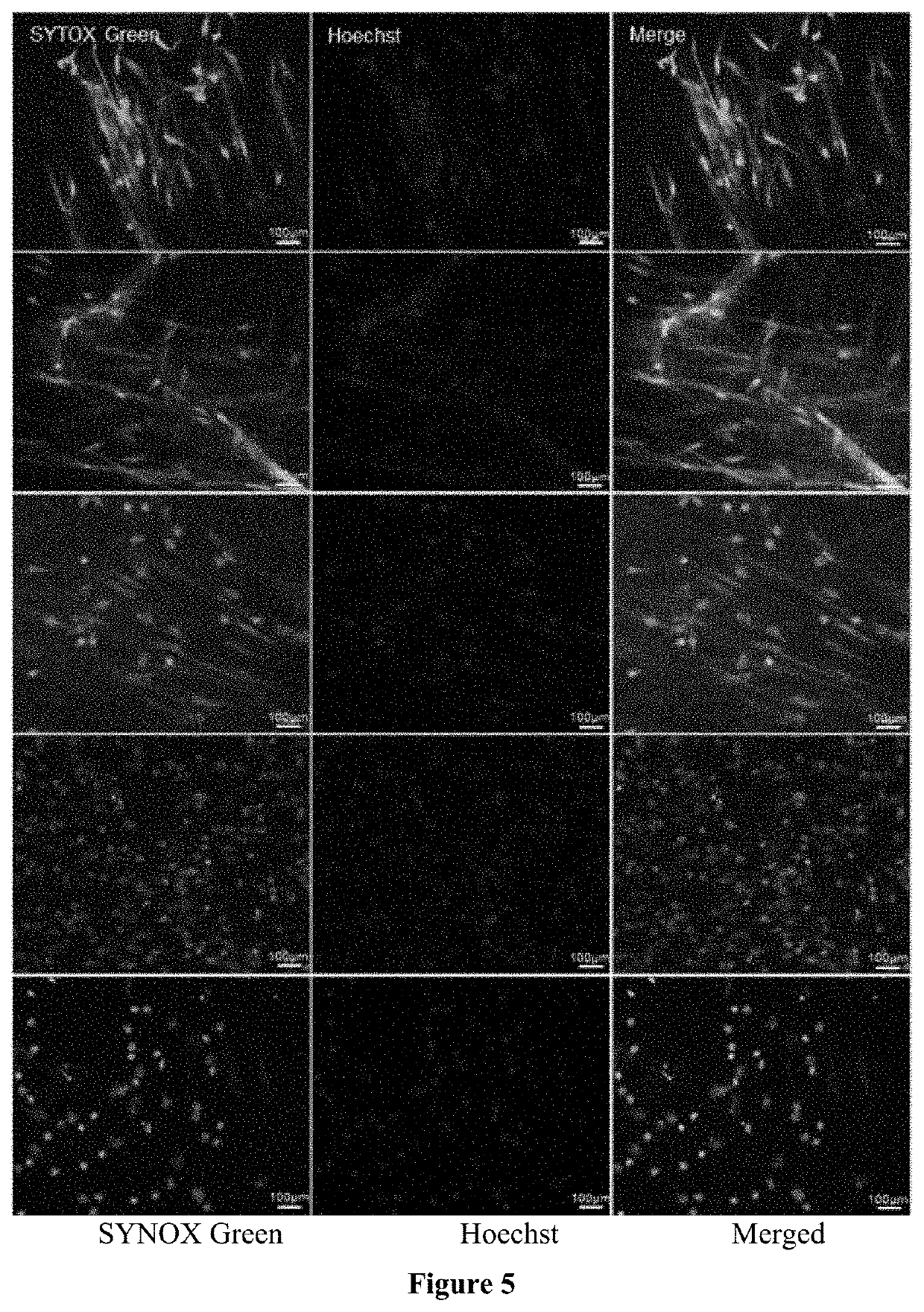Treatment and diagnosis of ocular surface disorders
a technology for ocular surface disorders and diagnosis, applied in the field of ophthalmic formulations, can solve the problems of time-consuming and frustrating treatment, and ineffective or variably effective, and achieve the effects of burning and stinging sensations, and many undesired side effects
- Summary
- Abstract
- Description
- Claims
- Application Information
AI Technical Summary
Benefits of technology
Problems solved by technology
Method used
Image
Examples
example 1
[0115]Inflammatory and immunological ocular surface disease causes subconjunctival fibrosis (i.e., scarring). FIG. 1 is a photo of a patient with tear deficient dry eye and ocular GVHD. Arrow points to area of subconjunctival fibrosis that is caused due to epithelial mesenchymal transition (EMT), a process that is induced by exposure to neutrophil inflammatory products. Heparins reduced the amount of neutrophil inflammatory products and neutrophil inflammatory strands. Therefore, heparins can reduce the EMT and fibrosis to treat tear deficient dry eye and ocular GVHD.
example 2
[0116]Inflammatory and immunological ocular surface disease causes symblepheron formation. FIG. 2 is a photo of a patient with tear deficient dry eye and ocular GVHD. Arrow points to area of symblepheron that is caused due to epithelial mesenchymal transition (EMT) and alpha smooth muscle actin upregulation, a process that is induced by exposure to neutrophil inflammatory products. Heparins reduced the amount of neutrophil inflammatory products and neutrophil inflammatory strands. Therefore, heparins can be used to treat symblepheron.
example 3
[0117]Inflammatory and immunological ocular surface disease causes mucocellular aggregates. FIG. 3 is a photo of a patient with tear deficient dry eye. Arrow points to mucocellular aggregate. Heparins reduced mucocellular aggregates and neutrophil inflammatory strands. Therefore, heparins can reduce inflammation and fibrosis and are used to prevent or treat symblepheron, subconjunctival fibrosis and fornix foreshortening and dry eye diseases.
PUM
| Property | Measurement | Unit |
|---|---|---|
| molecular weight | aaaaa | aaaaa |
| residence time | aaaaa | aaaaa |
| weight | aaaaa | aaaaa |
Abstract
Description
Claims
Application Information
 Login to View More
Login to View More - R&D
- Intellectual Property
- Life Sciences
- Materials
- Tech Scout
- Unparalleled Data Quality
- Higher Quality Content
- 60% Fewer Hallucinations
Browse by: Latest US Patents, China's latest patents, Technical Efficacy Thesaurus, Application Domain, Technology Topic, Popular Technical Reports.
© 2025 PatSnap. All rights reserved.Legal|Privacy policy|Modern Slavery Act Transparency Statement|Sitemap|About US| Contact US: help@patsnap.com



